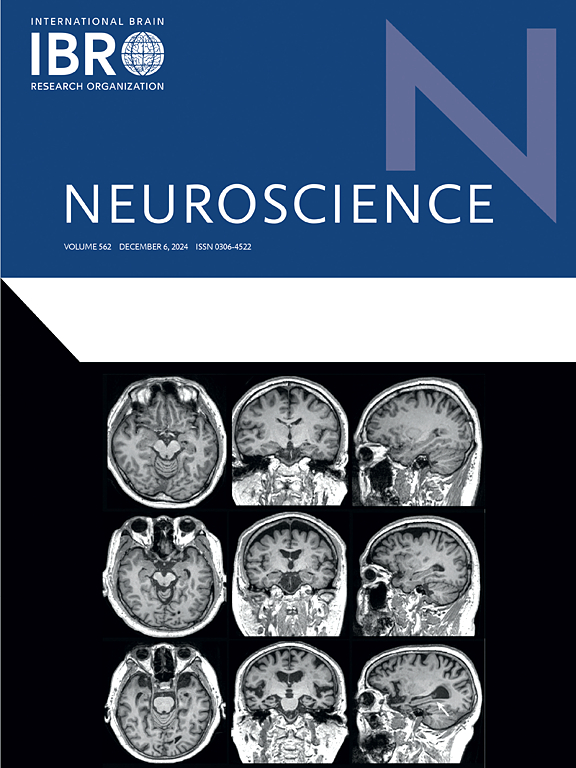High-frequency repetitive transcranial magnetic stimulation attenuates white matter damage and improves functional recovery in rats with ischemic stroke
IF 2.9
3区 医学
Q2 NEUROSCIENCES
引用次数: 0
Abstract
Stroke is a major cause of acquired disability and the second most frequent cause of dementia, while specific therapeutic rehabilitation strategies remain limited. Repetitive transcranial magnetic stimulation(rTMS) is a well-known rehabilitation modality after cerebral ischemic injury. White matter damage is an important contributor to motor and cognitive dysfunctions after stroke. This study aimed to evaluate the effect of rTMS on white matter recovery and neurological deficits in ischemic stroke. Grip strength test and novel object recognition test were conducted to assess motor and cognitive functions after middle cerebral artery occlusion(MCAO). MRI, including Diffusion tensor imaging (DTI) and Diffusion Tensor Tractography (DTT) were performed to evaluate white matter injury in MCAO rats. Moreover, Western blotting were detected to observe related myelin damage proteins in the ischemic brain. The results revealed that 10 Hz rTMS alleviated the motor and cognitive deficits in rats after ischemic surgery. Besides, the data from DTI and DTT showing that 10 Hz rTMS ameliorated the white matter lesion of rats after cerebral ischemia. In addition, 10 Hz rTMS attenuated significant loss of the myelin sheath by enhanced myelin associated proteins levels in the ischemic brain of ischemic rats. These findings suggest that 10 Hz rTMS exerted therapeutic neuroprotective properties after ischemic stroke, in a manner that may be associated with enhancing structural repairment of the white matter, which may provide a potential therapeutic strategy for ischemic stroke.
高频重复经颅磁刺激可减轻缺血性脑卒中大鼠脑白质损伤,促进脑功能恢复
中风是获得性残疾的主要原因,也是痴呆症的第二大常见原因,而具体的治疗康复策略仍然有限。重复经颅磁刺激(rTMS)是一种众所周知的脑缺血损伤后的康复方式。脑白质损伤是脑卒中后运动和认知功能障碍的重要因素。本研究旨在评价rTMS对缺血性脑卒中脑白质恢复和神经功能缺损的影响。通过握力测试和新物体识别测试评估大脑中动脉闭塞术后的运动和认知功能。MRI包括弥散张量成像(DTI)和弥散张量束成像(DTT)评估MCAO大鼠脑白质损伤。并用Western blotting观察缺血脑组织中髓磷脂损伤相关蛋白的表达。结果显示,10hz rTMS可减轻缺血性手术大鼠的运动和认知功能障碍。DTI和DTT数据显示,10hz rTMS对脑缺血大鼠脑白质损伤有改善作用。此外,10hz rTMS通过提高缺血大鼠缺血脑中的髓鞘相关蛋白水平,减轻了髓鞘的显著损失。这些发现表明,10hz rTMS在缺血性卒中后发挥了治疗性神经保护作用,其方式可能与增强白质的结构修复有关,这可能为缺血性卒中的治疗提供了一种潜在的治疗策略。
本文章由计算机程序翻译,如有差异,请以英文原文为准。
求助全文
约1分钟内获得全文
求助全文
来源期刊

Neuroscience
医学-神经科学
CiteScore
6.20
自引率
0.00%
发文量
394
审稿时长
52 days
期刊介绍:
Neuroscience publishes papers describing the results of original research on any aspect of the scientific study of the nervous system. Any paper, however short, will be considered for publication provided that it reports significant, new and carefully confirmed findings with full experimental details.
 求助内容:
求助内容: 应助结果提醒方式:
应助结果提醒方式:


